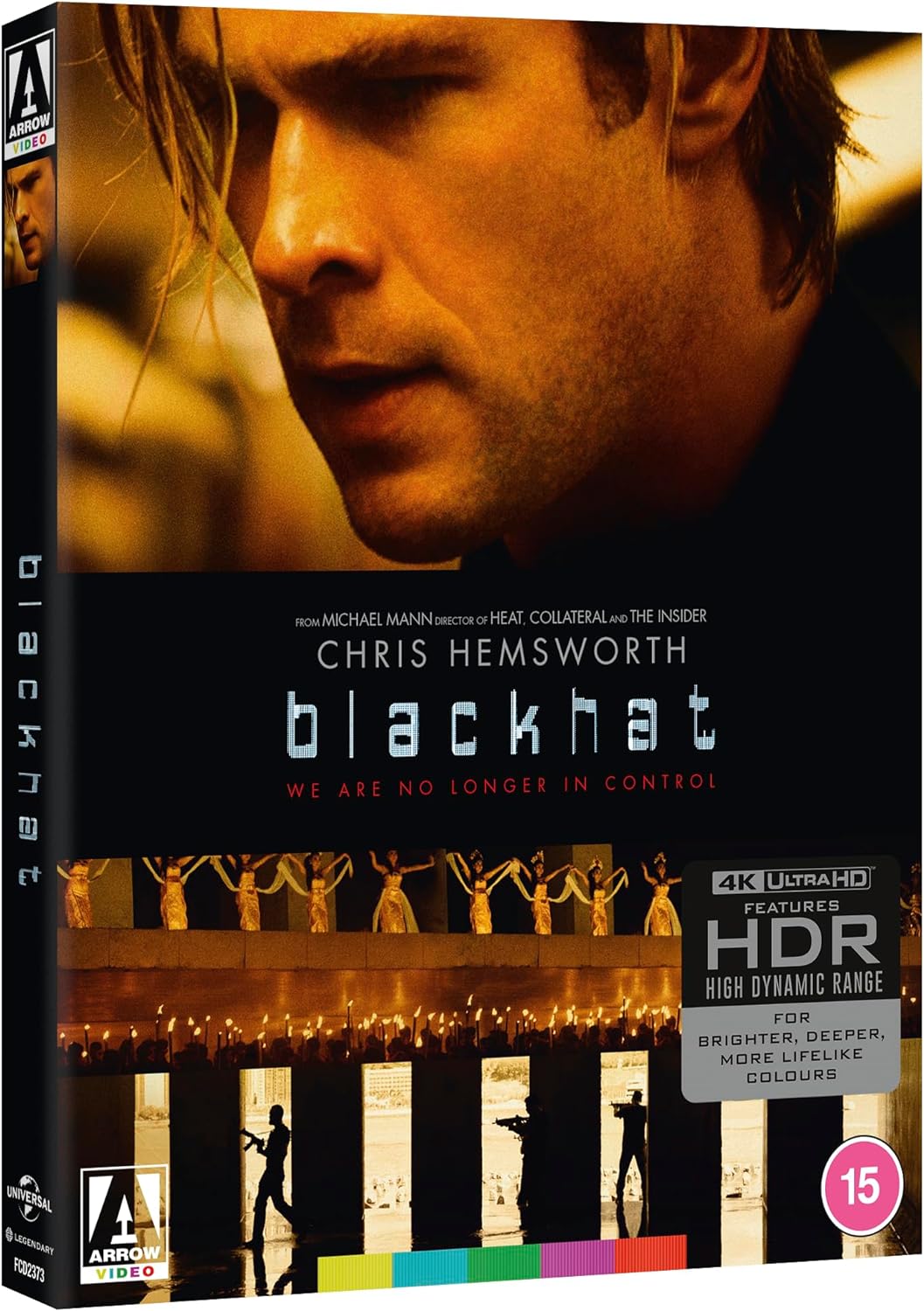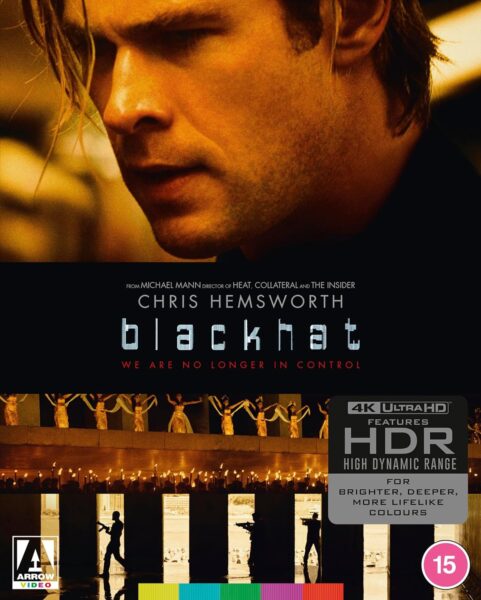
Blackhat 4K Review

Blackhat is a reminder that often a talented breakout star would arrive on the scene and spend their early Hollywood years trying to team up with as many prestige directors as there were available at the time.
If you look back at Colin Farrell, he made sure to get work with Oliver Stone, Steven Spielberg, Joel Schumacher (twice!), Terrence Malick and Michael Mann. Chris Hemsworth did a similar thing with the likes of JJ Abrams, Ron Howard (twice) and here in Blackhat for Michael Mann. More recently, Adam Driver has worked with Eastwood, Spielberg, the Coen Brothers, Soderberg, Spike Lee, Ridley Scott (twice!) and now the incoming biopic Ferrari for Michael Mann.
So, they have all worked with Michael Mann. And whilst that’s a mighty notch to have on your belt; all three films these actors worked on are sadly not the best of Mann’s Career, (Throw Mann and Christian Bale’s Public Enemies into that mix too if you like).
From the mid-2000s onwards Mann decided to disappear up the arse of digital camera filmmaking. And whilst the death of actual physical film is looking more evident; the experimentation with digital cameras was becoming very evident back then and often more miss than hit. People were missing the grain and the motion blur that comes with film. Instead, we often get what people refer to as the “soap opera effect”. Most notably, Peter Jackson suffered this criticism with his Hobbit trilogy; in particular when the first of those three films was released in cinemas.
Mann had been using digital camera from 2004’s Collateral onwards and Blackhat was the first film he did that used them entirely. Mann is very much an experimenter when it comes to visuals and sounds. He likes to take risks in order for his films to look and sound different, but he also likes the real of the real world. The digital filmmaking decision may bring the clarity of day, but, sadly, it does make his work look like a cheap TV show at times. And this is the guy that gave us Heat and Last of the Mohicans. It’s akin to a great painter shopping off their own arm.
But if you don’t mind your thrillers looking like very modern looking television then Blackhat isn’t quite the disaster it was made out to be when it came out. It’s an early indication of a modern adult thriller that Hemsworth was seeking out at the time. This has trans-morphed into the Extraction movies he currently heads up for Netflix; both are a wide step away from his Thor movies.
Hemsworth’s performance goes for a more stoic mean lead, but sometimes comes off a bit flat. The action on the other hand shows just how natural he looks on camera and how easy his body seems to find the choreography in any scene (Again, an early indication of what to expect when he moved onto the Extraction films). A great example of the film really working is in the action climax amidst a mass crowd of people. You can see how expertly Mann has shot and edited this sequence culminating a short but very brutal knife altercation. But to complain about the visuals again – the handheld digital work is either on the side of the action or fighting against it depending on what the filmmakers decided to shoot and how. It’s great that you get a real life feel to the movement, but the focus is at loggerheads with the audiences’ enjoyment as a viewer might feel dispelled to put on or remove their glasses to get a better focus on what is being shown.
Sounds comes in 5.1 and the visual are obviously as clear as you would expect any digitally shot film to look on 4K.
The ambient score used is very much in the ilk of what you might expect from a Michael Mann thriller. Harry Gregson-Williams and Atticus Ross are credited, but apparently much of their work went unused and other names should in fact be applied to the end product of the score.
Blackhat then was a misfire in the cyberthriller sub-genre, but even Mann’s worst is worth a peek.
BONUS MATERIAL
The two-disc set comes with three versions of the film. A US and International cut (which has about 30 seconds of added footage to the international version from one scene). And there is a director’s cut on disc 2 that emerged years ago that Arrow Video managed to get hold of. This is probably the preferable version that integrates cut footage and reassembles the order of certain moments.
And Arrow Video doing their job well have dug up some of the talent to interview for the extras including the cinematographer Stuart Dryburgh (who does a good job of address the visual style throughout the film) and the production designer, Guy Hendrix Dyas (a solid half hour interview on his career progression and then working on Blackhat).
There is also a critics commentary which has both speakers engaged throughout, but also noting off the bat that this is the black sheep of Mann’s filmography. They pull no punches whilst at the same time making the film seem worthy of the watch.
And as per Arrow usual, there is reversable sleeves with for the box art and a booklet with writing on the film.
Blackhat then is very much part if latter day Michael Mann filmography with all the aesthetics he grew accustomed to, but sadly destroyed a lot of how strongly his films (when he was using film!) used to stand out. Taking into account the upgrades in his film-making style, Blackhat is still a fairly enjoyable thriller about cyber crime with deposits of uber-violence along the way.
Steven Hurst
